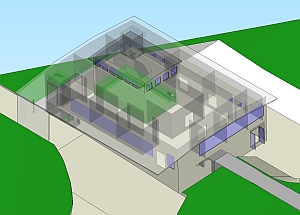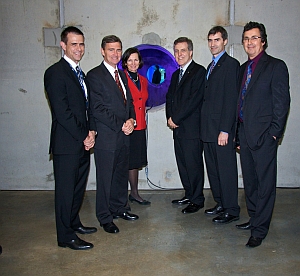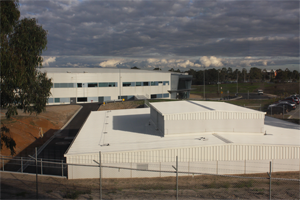The Australian Synchrotron's medical and imaging facility will be upgraded to become the most advanced instrument of its type in the world.
The facility has been awarded $13.2 million from the National Health and Medical Research Council (NH&MRC) and $1.5 million from the Victorian Government Department of Innovation, Industry and Regional Development (DIIRD) for a major expansion that will position Australia at the forefront of this field.
Scheduled for completion in 2012, the upgraded facility will deliver the world's biggest x-ray beam: 60 centimetres wide and five centimetres high. It will support the development of a new generation of techniques for medical imaging and radiotherapy and new approaches to clinical practices, therapies and drug evaluation.
Researchers will use the facility to obtain high-resolution images of cells and tissues, including tumours and lung tissue, and follow the movement of cells labelled with specialised markers through tissues and organs in real time. They will also study how radiation interacts with cancer cells and healthy tissues and use their findings to develop better radiotherapy treatments. In the longer term, these programs will be extended to clinical research with patients.
Daniel Hausermann, the synchrotron's principal scientist - imaging and medical therapy, said the new funding was due to the efforts of a consortium of research organisations and users supported by the Australian biomedical and medical research communities.
| STAGE 1
Construction of the core infrastructure of the imaging and medical beamline (IMBL) commenced in 2007, and the beamline was commissioned with x-rays in December 2008. The remainder of Stage 1, a basic research facility with limited instrumentation and a beam transfer tunnel terminating in a satellite building, will be completed using the $10 million allocated under the initial beamline funding program. |
Looking across the roof of the satellite building towards the main facility. |
STAGE 2
The new funding will go towards:
- replacing the current wiggler with a high-field (> 4 Tesla) super-conducting multipole wiggler to deliver the high-energy x-rays required for clinical programs
- extending the x-ray beam to the satellite building and installing beam-conditioning instrumentation for the wider beam
- implementing high-contrast, high-resolution, high-speed imaging facilities for measurements at 36 and 136 metres from the source
- acquiring a large-area, high-resolution detector
- constructing extensive support facilities for biomedical, preclinical and clinical research programs
- implementing a mammography research program
- developing patient handling and positioning systems for clinical imaging and therapy
- adding a second floor to the satellite building to house the support facilities (Victorian Government funding).
 |
Artist's impression of satellite building second floor (David Wang) |
 |
L to R in May 2009: Sean Gallagher (synchrotron board member), Victorian Premier John Brumby and Catherine Walter (synchrotron board chair) with the Australian Synchrotron's Rob Lamb, Ian Gentle and Daniel Hausermann in the tunnel that will house the 136-metre-long medical beamline. |
To view an animation of the new facility, go to
Click here to read the Media release.

